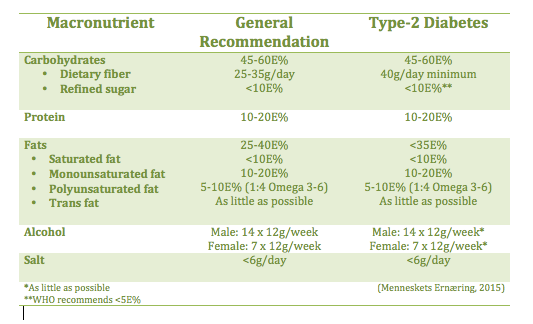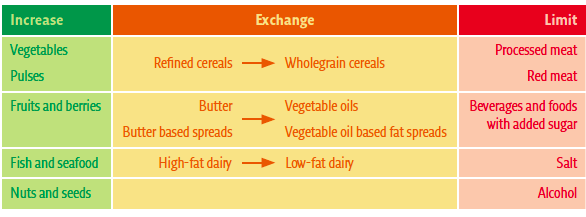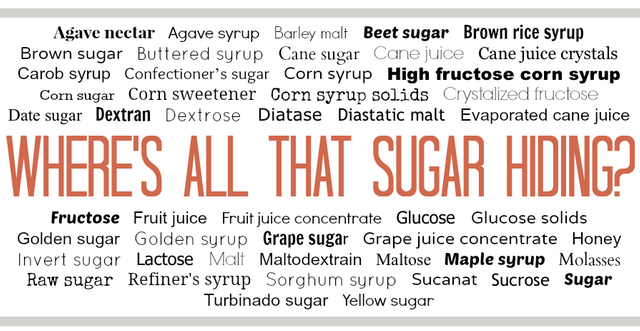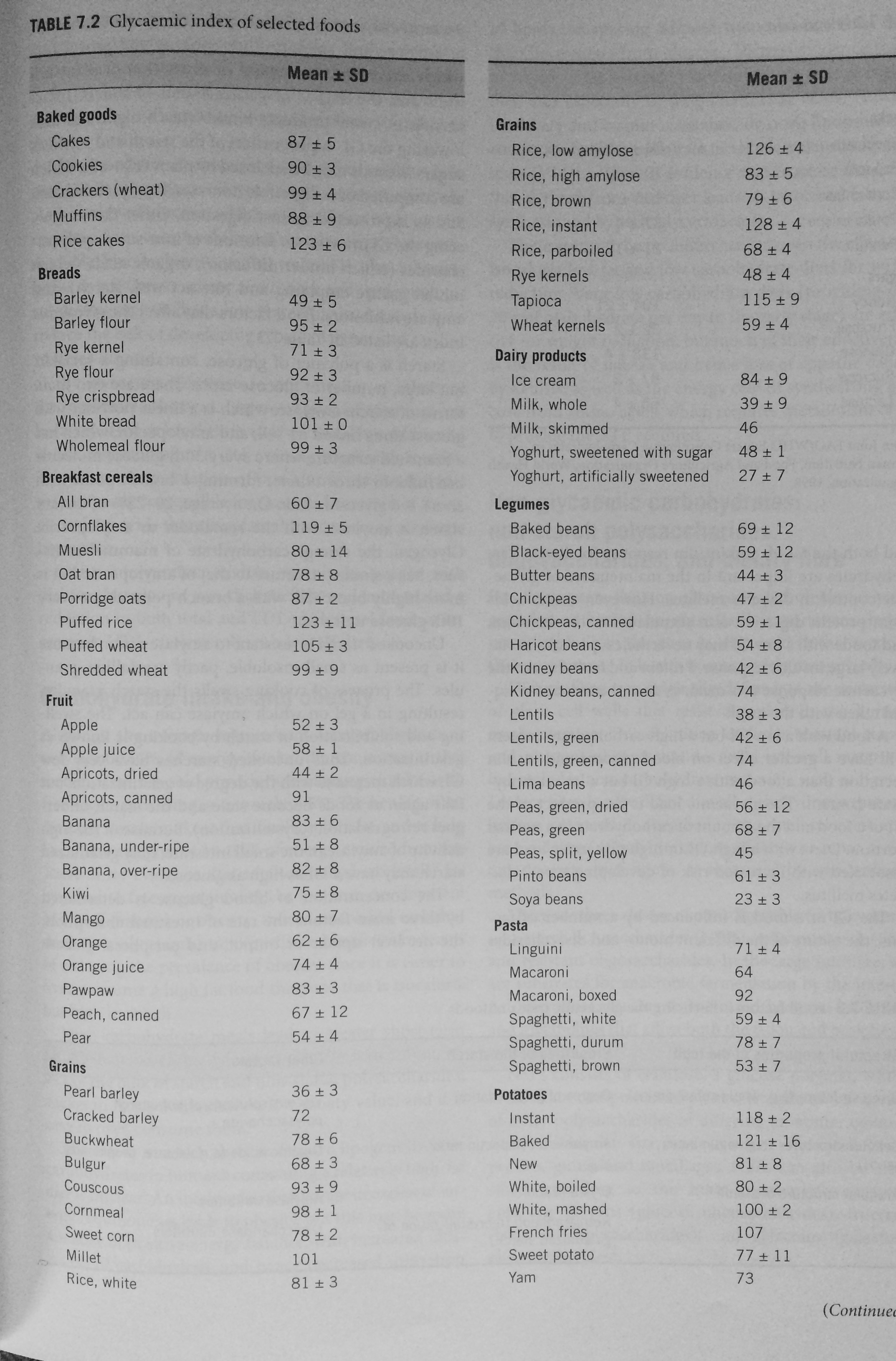Don't Worry Love, Carbs are still a Diabetics Best Friend
Receiving the news you or your loved has developed type-2 diabetes can feel like being hit by a train loaded with questions, worry and defeat. And though it is important to take this diagnoses seriously, to prevent further implications such as neuropathy, retinopathy or nephropathy or even heart disease - it is not at lost cause and there are many small changes you can make that have huge positive effects.
As a type-2 diabetic, (with no other serious health complications) you do not have to go on any special diets or exercise programs. In fact, type-2 diabetics are advised to follow general recommendations with just a few slight adjustments.
But just what are the recommendations??

E% means energy percent and in this case, it refers to how energy (calories) should come from each macronutrient group.
For example, between 45-60% of your calories should come from carbohydrates whereas only 10-20% should come from protein.
As you also recommendation for fat changes slightly for type-2 diabetics. The recommendation is that 35% of your total caloric intake comes from fats. If you have a BMI over 25 however, the target lowers to 30%. This is due to the higher risk of heart disease in patients with diabetes.
Saturated fat as found in meat and dairy products as well as dark chocolate and coconut oil should be limited to a max of 10% of your daily caloric intake. New Nordic Recommendation recommend 250-300g fish a week to ensure our intake of vitamin D and Omega 3.
As a plantbased food lover, I recommend removing meat and dairy completely from any diet. Newer research is also beginning to show overwhelming evidence of the positive effects of doing so, however I realise that such a radical change to ones diet is not always an option at the moment.
12g of alcohol is approximately 1 small glass of wine or one 330ml pilsner. As little as possible is recommended, as alcohol does not contain any nutritional value (just calories!) and long term use can have serious effects on your liver.

Photo from: New Nordic Recommendation
As I hope the above illustrates, it is possible, with a few simple allerations to maintain and even better your situation with type-2 diabetes. I also hope that you noticed the fact that carbohydrate intake did not decrease, but in fact remained the same. There are though some important tips for choosing which carbohydrates you get your energy from!
1. Eat a little fruit and lots of vegetables, especially fibrous vegetables
- Fruits are an important part of our overall health. As a type-2 diabetic, fruit is definitely off limits! Enjoy fresh or frozen berries with your oatmeal or an apple together with a piece of wholegrain toast with a little layer of almond butter.
- Juice, fruit-bars, banana chips and other dried fruits should be seen more as 'desserts' and enjoyed occasionally
- Eat lots of vegetables, especially fiberous vegetables! Enjoy cabbage in every color, broccoli, dark leafy greens, cauliflower, squash, zucchinis, carrots, beetroot, mushrooms etc!
- Vegetables such as cabbage are also high in dietary fiber! Especially when eaten raw, cabbage gives a sensation of fullness in the stomach that can last for hours! Not to mention the little extra love they give to your intestinal tract!
2. Choose whole grain carbohydrates and carbohydrates with a low Glycemic Index (GI)
- "If its white, it ain't right" - White breads, twinkies, pasteries, tortillas, white flours etc. are products that have been refined and stripped of nearly all of their nutritional content. Our digestive systems dissolve these products far too quickly, leaving us feeling far from sated.
- Find breads with whole kernels or products made with whole wheat flour. The more robust the bread, the longer it will sit in your digestive system, leaving you feel sated, as well as providing your with a plethora og vitamins and minerals!
- Avoid refined carbohydrates! White bread, chips, gummy candies, chocolate bars, soda (yes, even diet soda or that new stevia coca-cola), cakes, cookies, Captain Crunch and the like. These products are extremely high in sugar, low in nutritional value and tend to have a very high GI.
- Choose grains high in dietary fiber. Dietary Fibers are great for digestion, feeling full as well as controlling your blood glucose levels. A well balanced balanced blood glucose level is very important for diabetics and dietary fiber plays a vital role in that balance!
- Sugar hides in nearly all processed foods under many sudo names. Live Smart Ohio shows you a simple way to calculate the daily recommended amount of sugar based on an adult diet of 2000 calories a day. The following picture, also taken from their website shows just some of the aliases sugar goes by:

Photo from: Life Smart Ohio (link above)
I also have a list of foods with their respective glycemic indices. A general rule of thumb could be to eat foods with a GI lower than 50 but up to 65 most of the time. Anything above that is not forbidden, but should be chosen in moderation. The photo is taken from the newly release Human Nutrition book:

I hope that this article has given some clarity on the subject of type-2 diabetes, as well as taken a bit of a load of carbohydrates in general. Carbs are most definitely not bad for us, and are in fact our bodies main fuel source. And even with diseases such as type-2 diabetes, they are still important to our overall health and well-being!
*I am not a certified nutritionist yet, just one in training. All of the info I pass along is taken from textbooks and lectures, and described my own words. I am on my third semester of my bachelor in Nutrition and Health here in Denmark, and therefore will most of my data also come from Northern Europe and USA.
Happy eating steemies!
Let me know if you have any questions about any of the above information!
😻 😻 😻
I have taken more out of alcohol than alcohol has taken out of me.
- Winston Churchill
Good information here. By taking one's blood sugar readings and remembering what was previously consumed, one can learn how the foods are impacting you either positively or negatively and make dietary changes aaccordingly
There is definitely a lot of confusion out there. Partly because the human body is so complex that it is very difficult to say anything at all. So everything should be seen in general. I hope the overall message that comes from this, is that whole foods, plants are power and that we can come a long way, just buy eating whole foods!